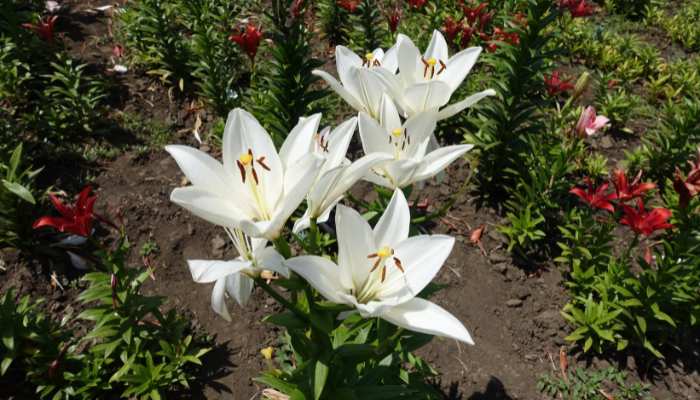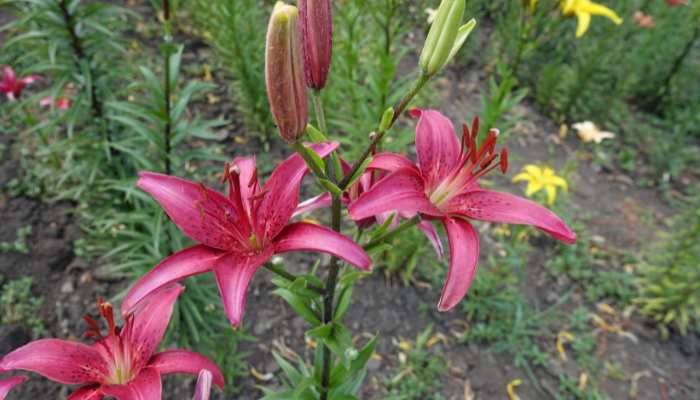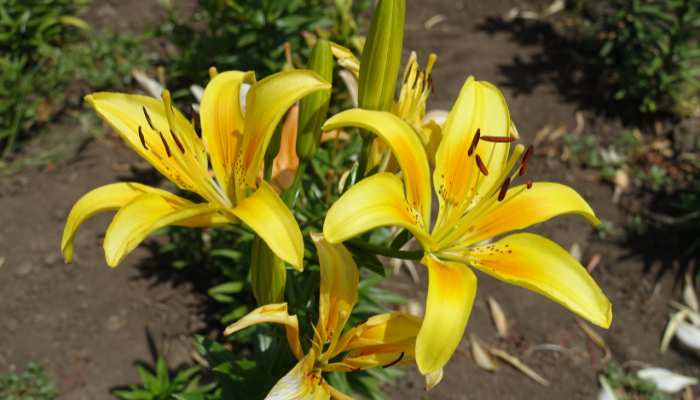Daylilies are a popular choice among gardeners for their vibrant blooms and easy maintenance. But are they true lilies? Let’s delve into the botanical intricacies of daylilies to uncover the truth.
Table of Contents
Understanding the Distinction: Daylilies vs. True Lilies
Daylilies, scientifically known as Hemerocallis, are often mistaken for true lilies due to their similar appearance. However, these two plants belong to different botanical families and possess distinct characteristics.

Botanical Classification: What Sets Daylilies Apart?
Daylilies belong to the family Hemerocallidaceae, while true lilies are classified under the family Liliaceae. This fundamental difference in taxonomy highlights their separate evolutionary paths and genetic makeup.
Distinctive Features of Daylilies
Daylilies are renowned for their versatility and adaptability, thriving in various climates and soil conditions. Their trumpet-shaped flowers come in a myriad of colors, ranging from vibrant yellows and oranges to softer pastel hues.
Unlike true lilies, which produce flowers on a single stalk, daylilies showcase multiple blooms on each stem, prolonging their blooming season.

Lifecycle and Blooming Patterns
One of the defining characteristics of daylilies is their ephemeral blooms, which last only for a day before withering away.
However, this fleeting nature is compensated by the plant’s prolific flowering habit, with new buds continuously emerging to replace the fading ones. This continuous cycle of blooming ensures a prolonged display of color throughout the growing season.
Cultural Significance and Symbolism
Daylilies hold cultural significance in various societies, symbolizing renewal, resilience, and beauty. In Chinese culture, they are revered as the “flower of forgetfulness,” representing the fleeting nature of earthly pleasures.
In contrast, Western folklore associates daylilies with rebirth and transformation, attributing mystical powers to their ephemeral blooms.

Landscaping with Daylilies: Design Tips and Ideas
Whether used as border plants, focal points, or mass plantings, daylilies add visual interest and charm to any garden landscape. Their vibrant blooms can be incorporated into mixed perennial beds, rock gardens, or even container plantings.
By selecting a diverse range of cultivars with varying heights, colors, and bloom times, gardeners can create dynamic and harmonious compositions that evolve throughout the season.
Caring for Daylilies: Essential Tips for Success
Daylilies are relatively low-maintenance plants, requiring minimal care once established. To ensure optimal growth and blooming, provide them with well-drained soil, ample sunlight, and regular watering during dry spells.
Deadheading spent flowers and dividing overcrowded clumps every few years will rejuvenate the plants and promote vigorous growth.

Conclusion: Embracing the Beauty of Daylilies
In conclusion, while daylilies may share certain visual similarities with true lilies, they belong to distinct botanical families with unique characteristics.
Appreciating the ephemeral beauty and resilience of daylilies adds a delightful dimension to gardening pursuits, enriching landscapes and inspiring admiration for nature’s fleeting wonders.















